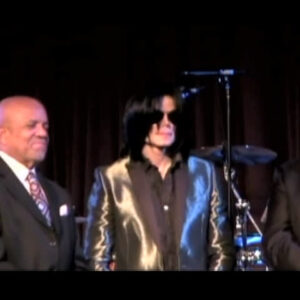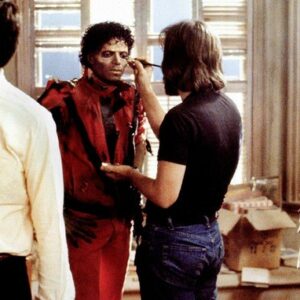There are moments in the world of music where art transcends entertainment, becoming a powerful force for social change. Michael Jackson’s “They Don’t Care About Us,” released as part of his 1995 album HIStory: Past, Present and Future, Book I, is a prime example. A searing critique of systemic oppression, government neglect, and racism, Jackson’s anthem brought the plight of the marginalized to the forefront, delivering its message in both sonic and visual form. The music video, filmed against the backdrop of Brazil’s vibrant culture and turbulent social landscape, not only amplified the song’s message but also became a visual ode to the struggles and resilience of underrepresented communities around the world.
In the tradition of great protest songs, “They Don’t Care About Us” serves as both a mirror and a hammer, reflecting societal injustices and striking at the structures that perpetuate them. This essay delves into the multi-layered brilliance of Jackson’s creation, the significance of Brazil as the video’s backdrop, the song’s powerful social commentary, and its lasting legacy in the realm of pop culture and activism.
Brazil: A Backdrop of Beauty and Struggle
Choosing Brazil, specifically the favelas of Rio de Janeiro and Salvador, as the setting for “They Don’t Care About Us” was a masterstroke in cultural and political symbolism. The favelas, or informal settlements, have long been synonymous with both the vibrant energy and stark inequalities that characterize Brazil’s socio-economic landscape. These neighborhoods, teeming with life, color, and music, are often plagued by poverty, crime, and the neglect of the government. By filming in these locations, Jackson not only showcased the pulsating spirit of Brazil but also highlighted the extreme disparities that exist within its borders.
In Rio’s favelas, Jackson was surrounded by the energy of local residents, their communities forming a striking contrast to the lush landscapes of Salvador, known for its deep Afro-Brazilian heritage. Both settings served as fitting metaphors for the themes of the song, as Jackson sought to portray the struggles of marginalized populations not only in Brazil but across the globe. The choice of Brazil resonated on multiple levels, as the country has a long history of racial and economic divides, echoing the global struggles that Jackson sought to address through his art.
The streets of Rio, with their mix of poverty and vitality, provided a real-life stage for Jackson’s message of defiance and resilience. In many ways, Brazil’s favelas, with their tight-knit communities and cultural richness, were the perfect visual representation of the song’s ethos. Through his decision to feature local residents in the video, Jackson gave a voice to those often ignored by the world’s elite, emphasizing that the struggles of the oppressed are universal and deserving of global attention.
A Powerful Social Commentary
At its core, “They Don’t Care About Us” is an unapologetic indictment of the systemic injustices that permeate societies across the globe. The song’s biting lyrics tackle issues of racism, human rights violations, and government neglect, all themes that were, and still are, globally relevant. “All I wanna say is that they don’t really care about us” became a rallying cry for those disillusioned by power structures that seem indifferent to the plight of the poor and disenfranchised.
In the context of the video, these themes took on even greater significance. By filming in Brazil’s favelas, Jackson created a powerful visual representation of the inequality and marginalization that are central to the song’s message. The juxtaposition of Jackson—a global superstar—standing shoulder to shoulder with Brazil’s poorest citizens was a striking image that reinforced the universality of the song’s message. In the favelas, where government neglect is a daily reality, Jackson’s lyrics resonated with a palpable sense of urgency.
Moreover, Jackson’s choice to include local people as extras in the video was a profound statement in itself. Rather than relying on professional actors, Jackson gave the people of Brazil’s favelas a platform to be seen and heard on a global stage. This act of inclusion underscored the message of the song: that the struggles of marginalized communities are not isolated incidents but part of a larger, global pattern of neglect and oppression.
Jackson’s use of powerful imagery throughout the video, from shots of vibrant street performances to scenes of him marching alongside locals, was a reminder that music—and art in general—can be a force for social change. The video’s raw, unfiltered portrayal of life in the favelas gave viewers around the world a glimpse into a reality that is often obscured by the glamour of tourist brochures and travel guides.
Collaboration with Olodum: A Celebration of Afro-Brazilian Culture
A key element of the video’s power lies in its collaboration with Olodum, an Afro-Brazilian percussion group based in Salvador, Bahia. Olodum, with its infectious rhythms and unmistakable energy, provided the perfect musical backdrop for Jackson’s powerful lyrics. Their participation in the video was not just a stylistic choice but a statement of cultural pride and resilience.
Founded in 1979, Olodum is renowned for its promotion of African-Brazilian culture, particularly through music and art. The group’s distinctive samba-reggae rhythms became the heartbeat of the video, infusing it with a sense of defiance and hope. Their drums, which have long been a symbol of resistance and identity for Afro-Brazilian communities, provided a powerful auditory metaphor for the song’s themes of struggle and perseverance.
Jackson’s decision to collaborate with Olodum was not only a nod to the rich cultural heritage of Brazil but also a way to honor the African diaspora and its contributions to global culture. In a world where African-descended communities are often marginalized, Jackson’s partnership with Olodum was a bold statement of solidarity and respect. Through this collaboration, the video became not just a protest against injustice but also a celebration of cultural identity and resilience.
The vibrant colors, energetic performances, and unmistakable rhythms of Olodum brought an added layer of depth to the video, making it not just a visual experience but a visceral one. The sounds of the drums, combined with Jackson’s impassioned vocals, created a sense of urgency and power that resonated with viewers on a deeply emotional level.
Jackson’s Personal Connection to the Struggle for Justice
Michael Jackson was no stranger to controversy or activism. Throughout his career, he used his platform to speak out against injustice and to advocate for the marginalized. “They Don’t Care About Us” was one of his most direct and politically charged songs, and its accompanying video was a testament to his commitment to social justice.
For Jackson, this project was deeply personal. As a black man in America, he had experienced racism and discrimination firsthand. His desire to connect with underrepresented communities and to give them a global platform was a driving force behind the creation of the video. In many ways, Jackson saw himself as a voice for the voiceless, using his fame and influence to shine a light on the struggles of the marginalized.
In the video, Jackson’s presence among the people of Brazil’s favelas was more than just symbolic. It was a statement of solidarity and empathy. By placing himself in the midst of these communities, Jackson was making it clear that the struggles of the poor and oppressed were not abstract concepts to be intellectualized but real, lived experiences that demanded attention and action.
Controversy and Reception
As with many of Jackson’s projects, “They Don’t Care About Us” was not without controversy. In Brazil, the video faced pushback from both local officials and the media. Brazilian authorities were concerned that the video would portray the country in a negative light, focusing on its poverty and inequality rather than its beauty and culture. There were attempts to prevent the video from being filmed in the favelas, but Jackson persisted, determined to bring his vision to life.
Despite the initial resistance, the video was met with widespread acclaim upon its release. Fans and critics alike praised Jackson for his bold message and his willingness to tackle difficult social issues. The video quickly became a cultural touchstone, sparking conversations about inequality, racism, and government neglect.
Over time, “They Don’t Care About Us” has come to be seen as one of Jackson’s most important works, not just for its artistic merit but for its lasting impact on pop culture and social movements. Today, the video remains a testament to Jackson’s ability to merge art with activism, using his music to challenge the status quo and to inspire change.
Conclusion: A Legacy of Art and Activism
“They Don’t Care About Us” is more than just a music video. It is a powerful commentary on human rights, social justice, and the resilience of marginalized communities. By choosing Brazil as the backdrop for the video, Michael Jackson highlighted the beauty and struggle that coexist in the favelas, creating a visual and auditory experience that resonated with audiences around the world.
Through his collaboration with Olodum and his decision to include local residents in the video, Jackson made a profound statement about the power of cultural pride and solidarity in the face of oppression. His message, delivered through the universal language of music, remains as relevant today as it was when the video was first released.
In the end, “They Don’t Care About Us” stands as a testament to Michael Jackson’s legacy as both an artist and an activist, a reminder that music can be a force for change, and that the struggles of the marginalized are deserving of our attention and our empathy.





